OMG.
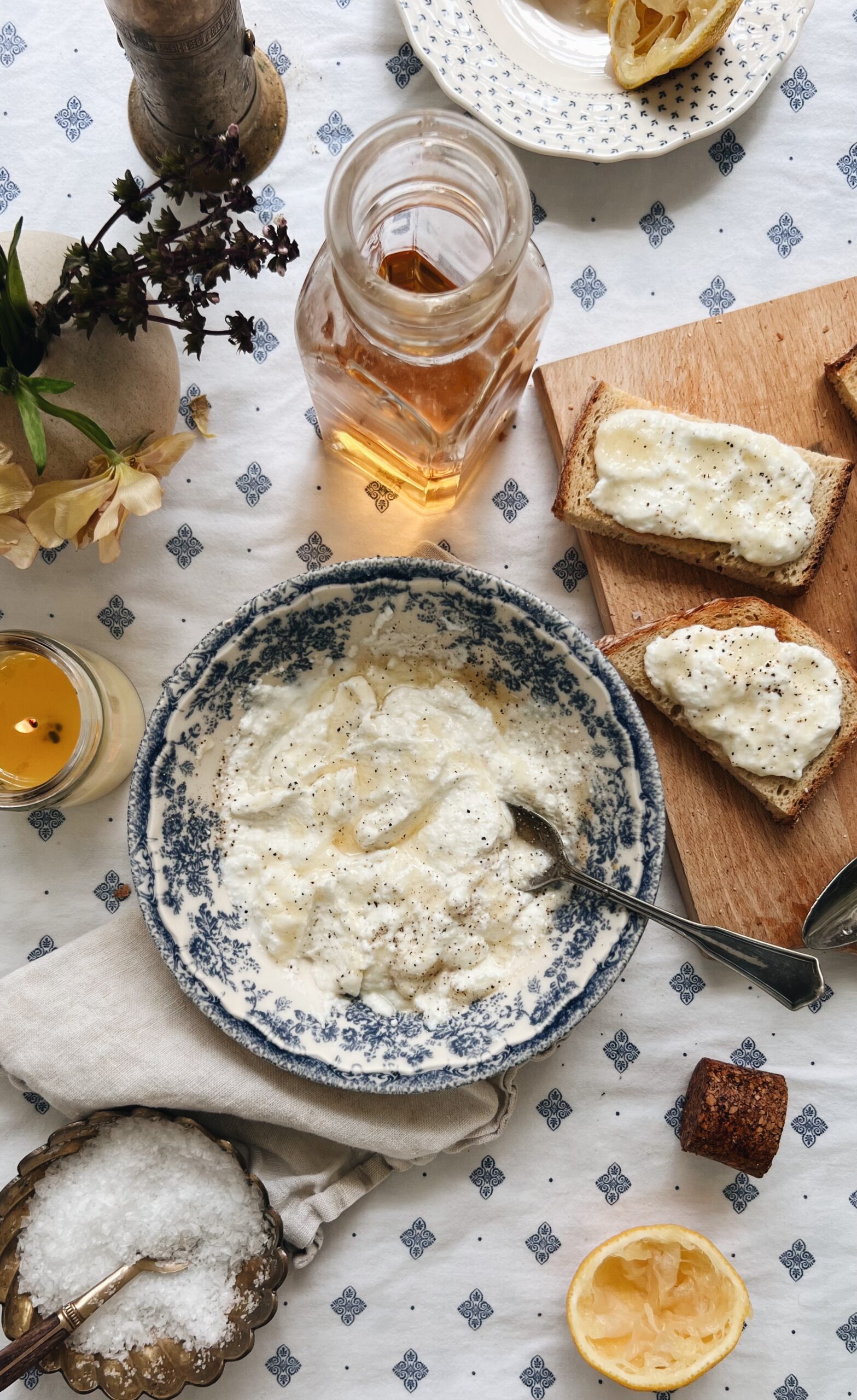
First, this is a journey for me.
Much like Mary Oliver, pie crusts and my ever-growing brass mirror collection. A journey. (don’t look at me like that, Mindy.)
Which means, I’ve not mastered it. But I had to document where I landed this week because still, STILL, it was unbelievably flooring.
My ricotta (which means recooked, and apparently we’re not supposed to call it cheese. still wrapping my head around that one.) was very creamy. Less firm curds, more silkiness. Which is great! But I have two theories why:
- I was impatient and didn’t let the milk heat quiiiiiiiiite long enough. I couldn’t find a thermometer and just eyed it, and it probably could have come to more of this-side-of-robust simmer. Still gentle, but a hair more.
- I was impatient and didn’t let it cool long enough. It smelled so good and looked so pretty, I had to. I had to!
See a trend here? It’s all a journey.

You can use white vinegar in place of lemons, but I just love lemons. (fish the seeds out!)
You’ll want 1/3 of a cup. That acidity is key for the curds, bruh!
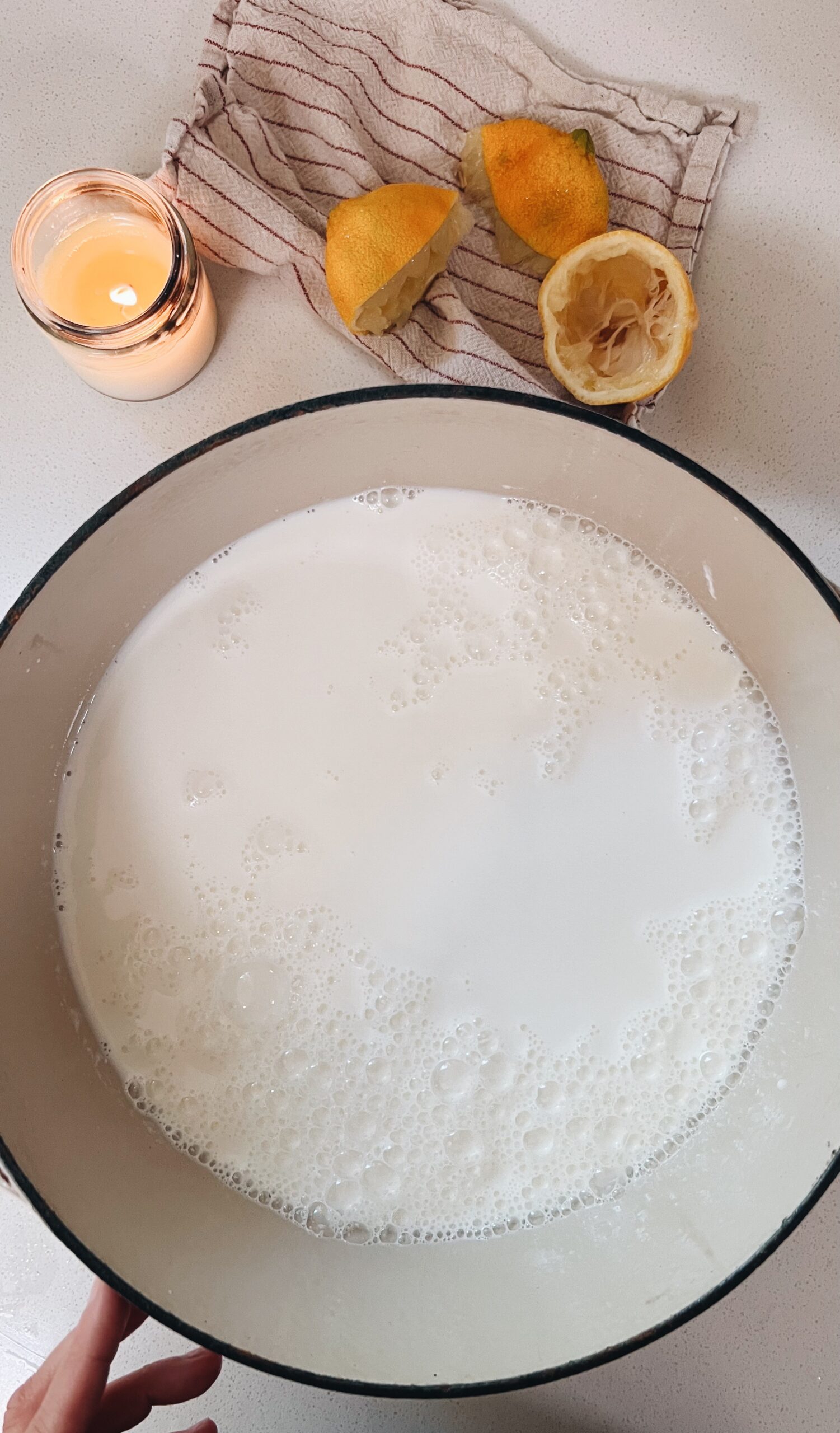
The milk: I’ve made this twice in the last week and the first time I used organic milk. I’ve heard that non-organic works better, so that’s what I used this time. And whole milk! You want full fat for that extra succulent, rich flavor.
I looked at a bunch of recipes on the interwebs and some used heavy cream, some did not. I used a cup (and 7 cups whole milk) and the flavor slapped my life upside down. Hiiiiiighly recommend.
But, to keep cost down, opt for milk only!
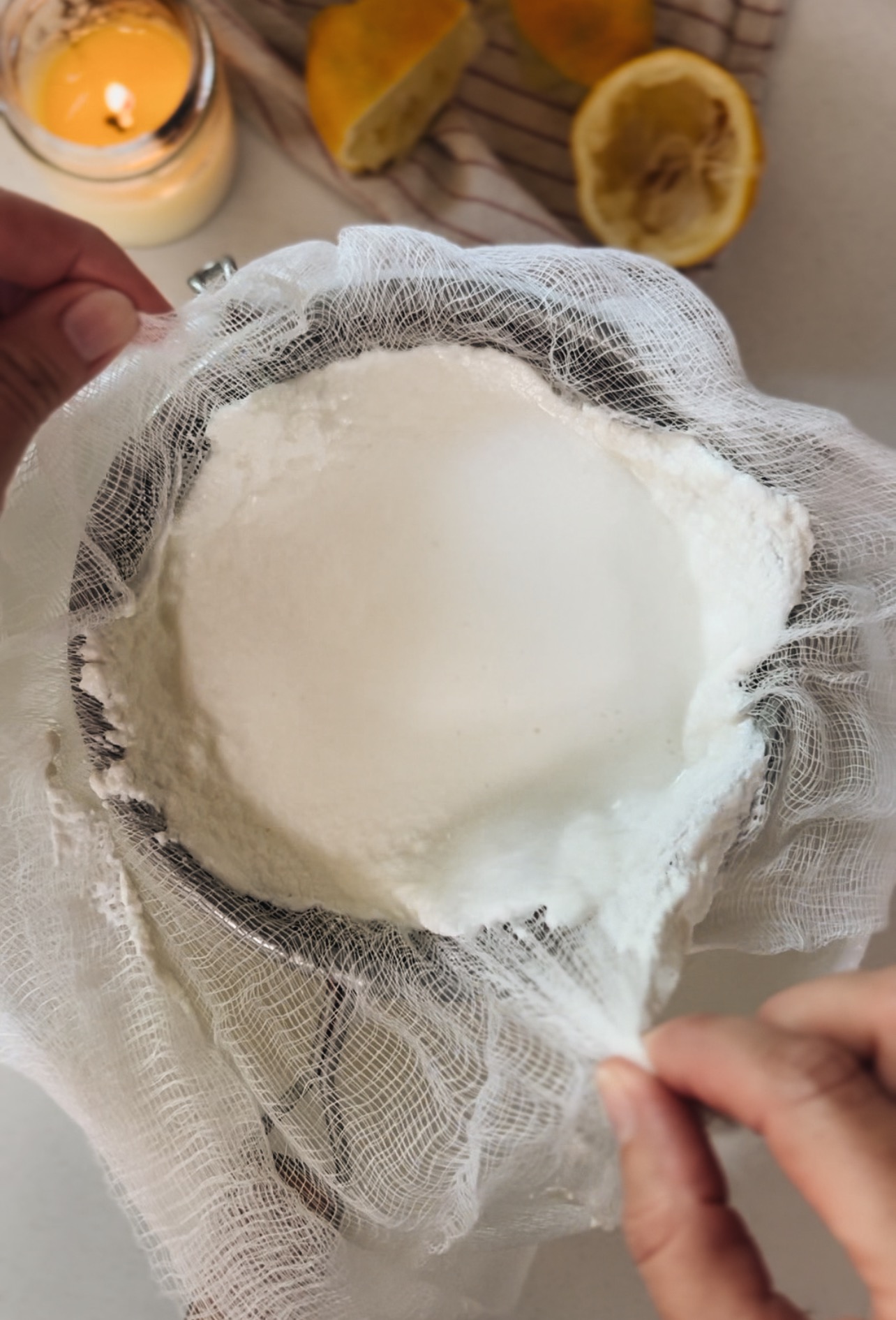
After it simmers, you’ll add the lemon juice and let it sit for about a minute, off the heat. Some recipes call to let it sit 15 minutes before you stir. Some immediately call to start stirring. Ricotta makers: what do you prefer? To sit or not to sit?
You’ll gently pour the milk into a sieve that’s over a large bowl and let the whey drain through, as the ricotta remains. And truly, you can let this sit for a good while as the weigh drains.
Ricotta makers: what tips do you have for what to do with the whey? It feels terrible to toss. What do I do with it?
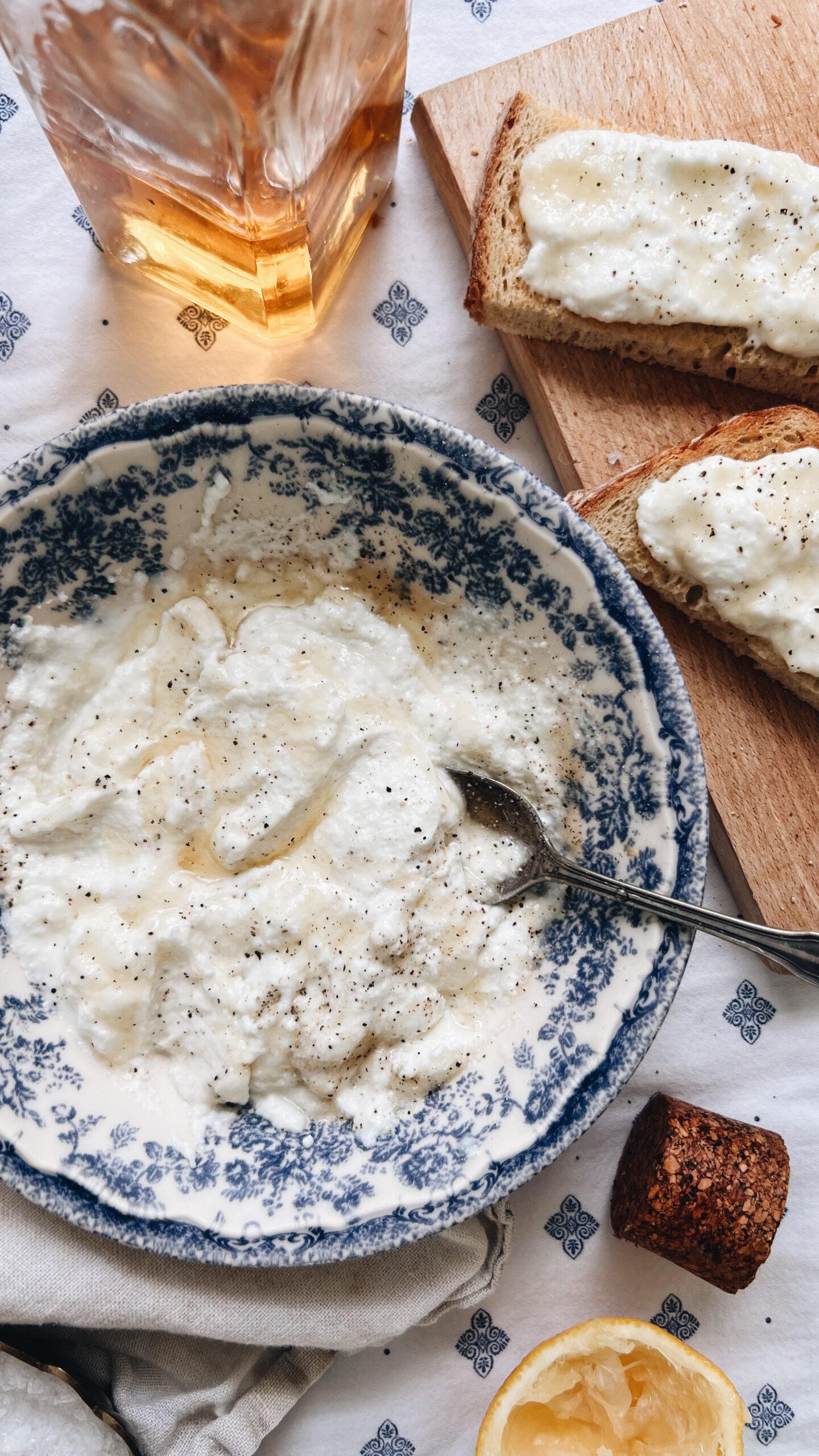
Hellooooooooo would you look at that. Creamy, silky, fluffy. I sprinkled some flakey maldon salt over the top, gave it a good grind of black pepper and drizzled with agave nectar. I lit-rally have no words. The richness, the slight tanginess, it was pure ricotta bliss spread over toasted sourdough.
Look at this journey! Unhinged.
Try this, if you get a hankering for something orbitally delicious. The process is soothing, the end result beyond satisfying.
Ricotta makers: give me all your tips for how to perfect! This blew me away as is, but I know there are tweaks to give it more heft. If that’s what you’re going for.
Spill it!
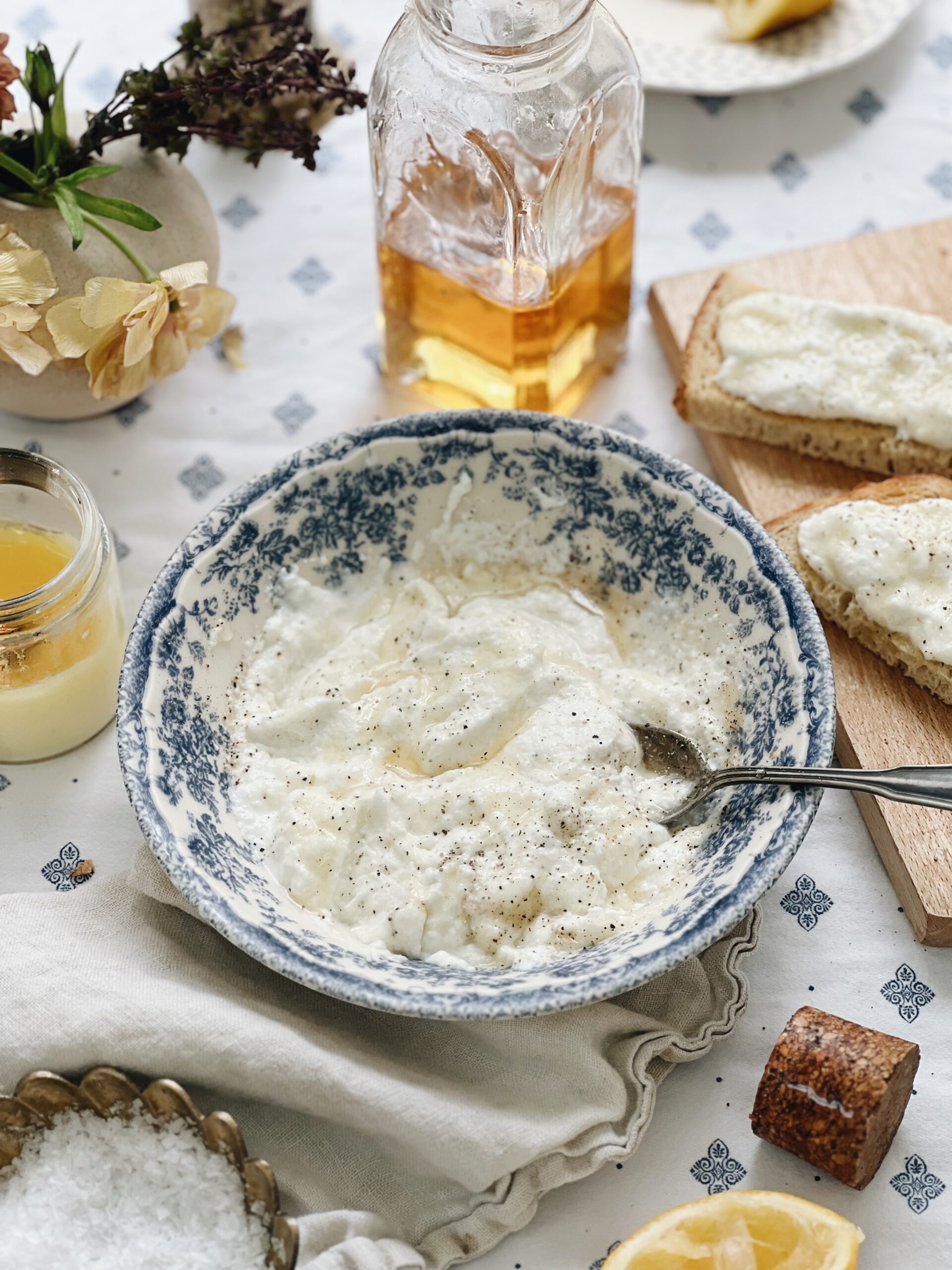
I implore you to give this a shot. Pure joy, I tell you.
Ingredients
- 7 cups whole milk (not ultra-pasteurized)
- 1 cup heavy cream
- 1/3 cup lemon juice
- Pinch of salt
Instructions
- Bring the milk, cream and a pinch of salt to a very light simmer. You don’t want to boil the milk, just get it steamy with a few bubbles around the edges. Off the heat, add the lemon juice and let it sit about a minute. With a wooden spoon, gently stir the milk until you see curds start to form. Sometimes they’ll be bigger, other times tiny. Hashtag science?
- Place a sieve over a large bowl. Lay a piece of cheese cloth in the sieve, and gently pour the milk into it. The curds remain, the weigh ends up in the bowl. The longer you let this sit, the firmer the ricotta will be. I let mine sit about 15 minutes, then popped it in the fridge until I was ready. Which was immediately.
- Garnish with flakey salt, a crack of black pepper and either a tiny drizzle of agave nectar, honey or olive oil! Spread over toasted baguette. Delish.
- Makes about a cup of ricotta.
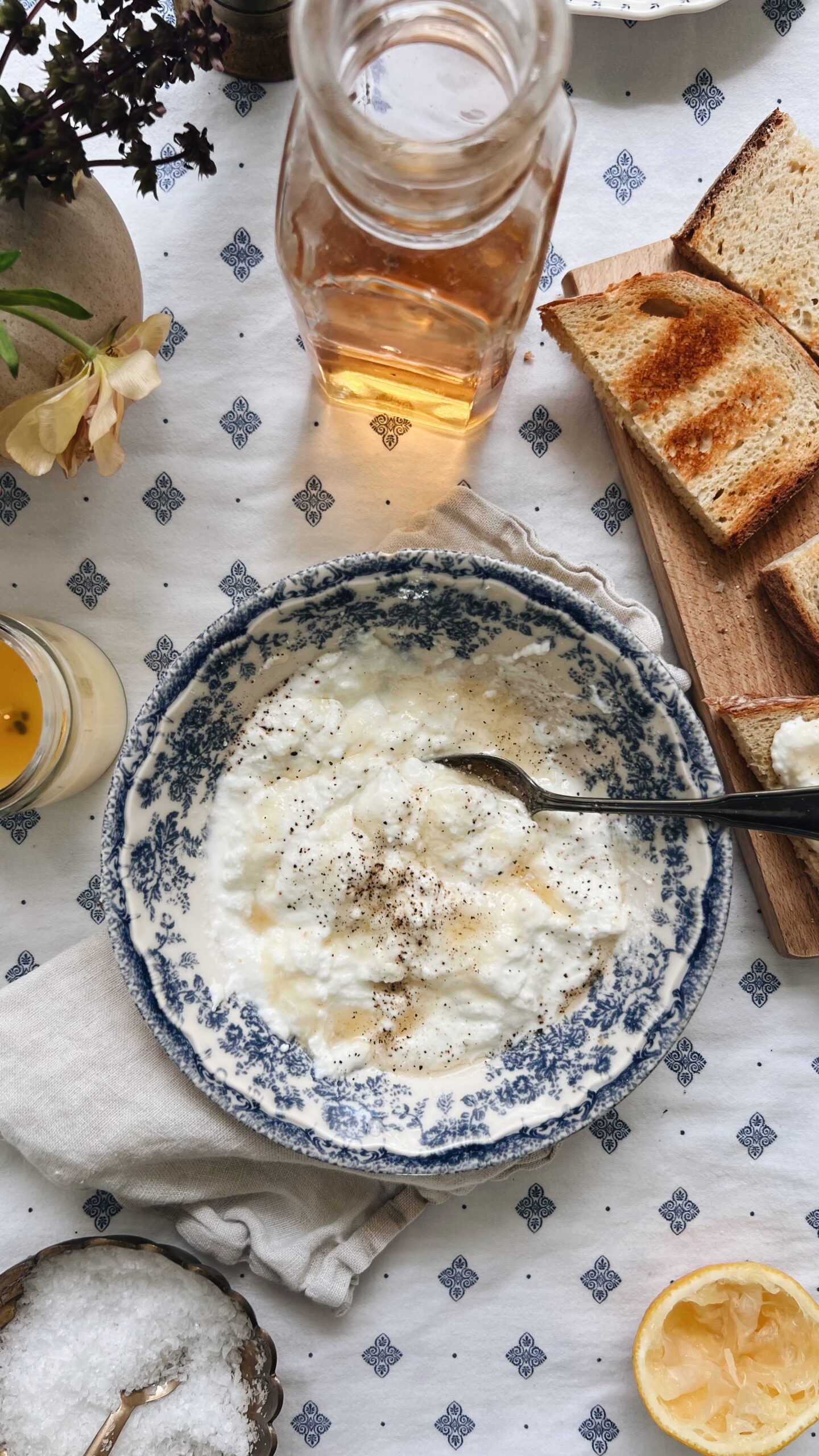
Aaaand the video for ya!

 Save Recipe
Save Recipe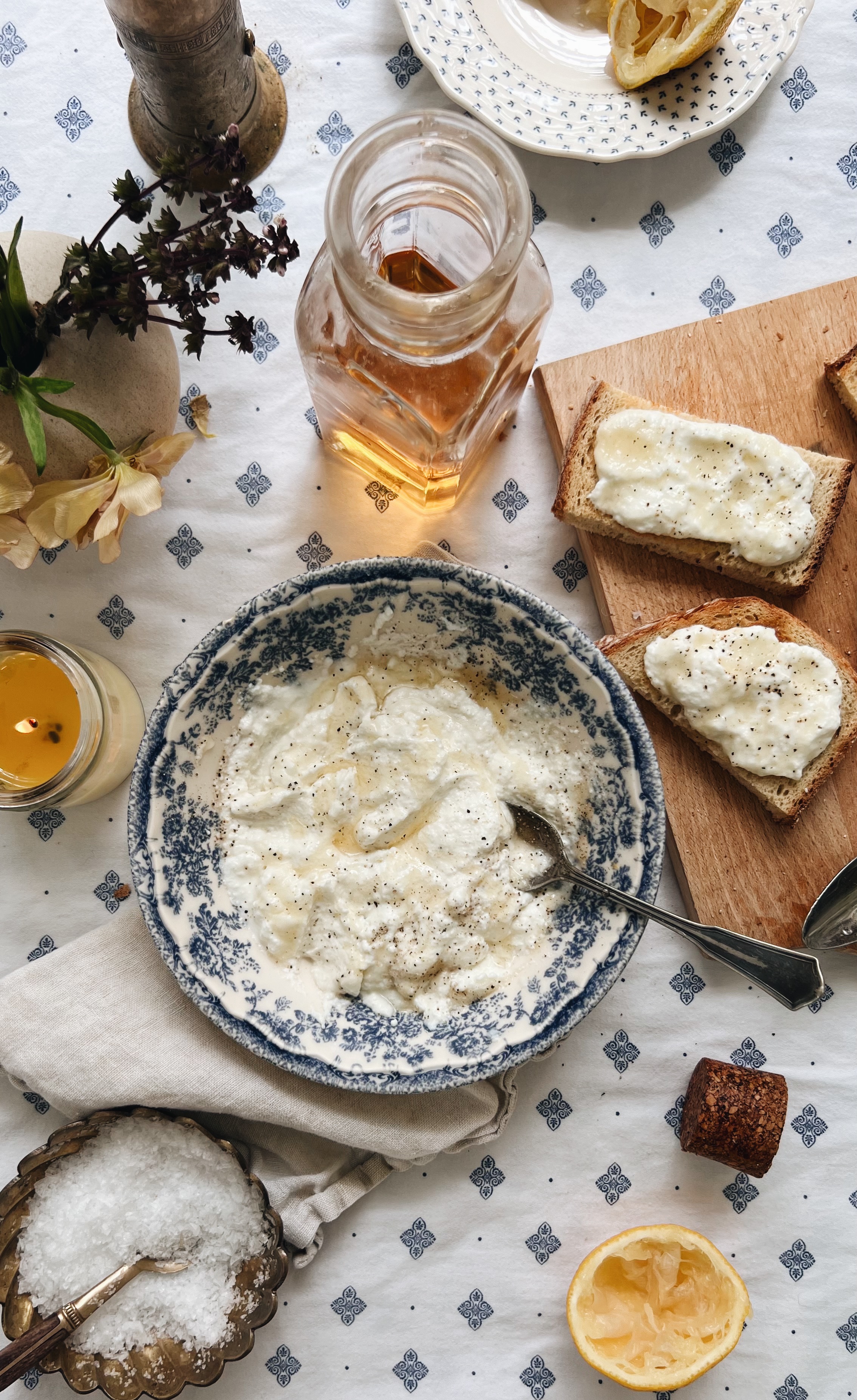
65 Responses to Homemade Ricotta